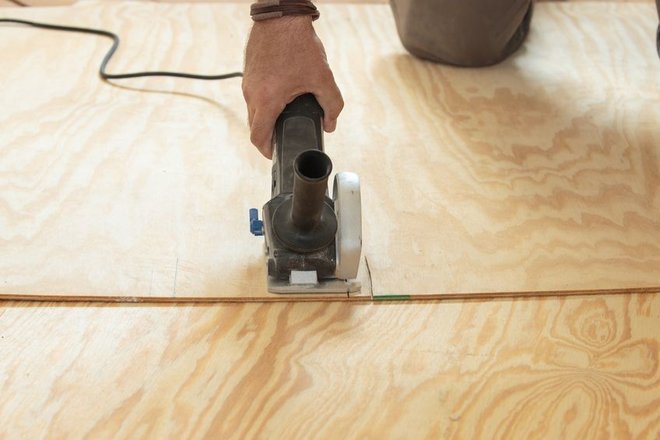
Do It Yourself– When deciding whether to purchase marine plywood or regular plywood, you need to consider the advantages of each with regard to your flooring project.
Advantages of Marine Plywood over Regular Plywood
Whether used as a floor or a subfloor, marine plywood resists rotting, warping and shrinking. It resists humidity from steam and can stave off absorbing stagnant water. It even holds up well against boiling water! This makes it a superb option as an underlayment for your kitchen or bathroom floor. At lumber yards, it is usually stored indoors, and this also enhances its moisture-free nature.
Marine plywood is also stronger and more durable than regular plywood, which has only three layers. Marine plywood has five or more layers that are bound together with waterproof adhesive, which allows it to bear heavier loads and repel moisture from its core. As a result, you can use a thinner sheet that will have the strength of a thicker, regular sheet of plywood. In addition, it doesn’t have as many voids as regular plywood, which makes it structurally stronger. While regular plywood has little spaces and air pockets in each layer, marine plywood has substantially fewer. The extra strength and durability makes marine plywood a good subfloor for heavy flooring materials, like ceramic tile.
Marine plywood is available in a variety of thicknesses just like regular plywood. However, it is easier to bend and cut. This makes it ideal as a subfloor, since you will doubtless be making many cuts to get it to fit around door jambs, cabinetry, awkward corners, and other tight spaces. Unlike regular plywood, it is usually rated higher, having fewer visual defects like knots. Its surface is smoother and less splintery. It takes paint well and could make a beautiful finish as a top floor—something that regular plywood could not do.
Advantages of Regular Plywood over Marine Plywood

Regular plywood is much less expensive than marine plywood. A sheet can cost $10 to $50, as opposed to the cost of marine plywood, which ranges from $70 to over $200 a sheet. It is also easier to find. While marine plywood is not available everywhere (and acquiring it may entail shipping charges) regular plywood is available at nearly every lumber yard and home improvement store. It is the standard for interior floor underlayment in residential construction. Unless you are installing flooring inside a recreational vehicle or a boat, regular plywood will probably do the job.
Making the Choice
Consider exactly what you need by estimating the amount of moisture your floor will be exposed to. If your home has suffered from toxic molds in the past, marine plywood may keep your home healthier. If your climate is very sticky and damp in the summer, and the steam from the shower just never seems to evaporate, marine plywood would protect your bathroom floor from eventual damage. On the other hand, if you live in a desert climate with low humidity or have never had moisture problems, molds, or leaks, the cost of marine plywood would probably be an unnecessary blow to your wallet.



